Bees are the unsung heroes of every thriving garden. These tiny pollinators are responsible for helping our fruits, vegetables, and flowers flourish. Yet, as bee populations face global decline, gardeners everywhere can make a big difference by creating pollinator-friendly spaces. The simplest way to do that? Plant annual flowers that attract bees naturally.
Unlike perennials that return every year, annuals bloom fast, bright, and long—making them irresistible to bees searching for nectar and pollen. They’re easy to grow, often low-maintenance, and perfect for adding bursts of color to borders, containers, or even small balcony gardens.
Here’s a guide to six stunning annual flowers that bees can’t resist, along with practical growing tips to help your garden buzz with life all season long.
1. Zinnias — The Colorful Bee Magnet
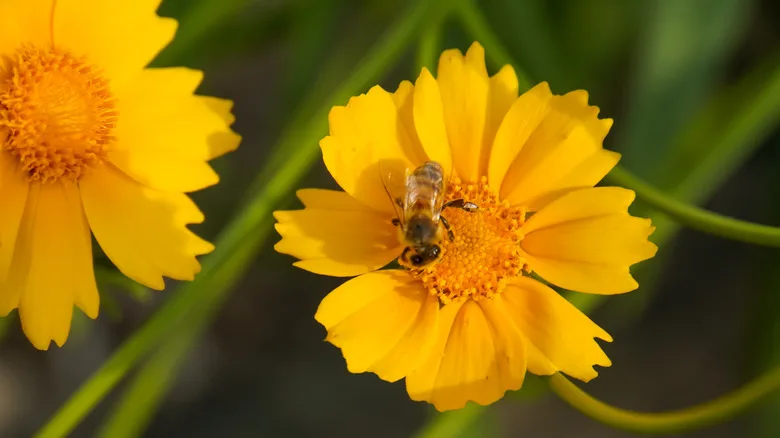
Why bees love them:
Zinnias are a pollinator’s paradise. Their bold, open blooms come in every color imaginable—crimson, coral, yellow, pink, and even green—and are loaded with nectar. Their flat flowerheads make it easy for bees to land and gather pollen, while the bright petals act as natural “landing signals.”
Bloom season: Mid-summer to frost
Best for: Honeybees, bumblebees, and solitary bees
Growing tips:
- Zinnias thrive in full sun and well-draining soil.
- Sow seeds directly in the garden after the last frost.
- Avoid overwatering—keep soil slightly moist.
- Regular deadheading (removing spent flowers) keeps blooms coming for months.
- Choose single or semi-double varieties like ‘Benary’s Giant’ or ‘Profusion Series’—they provide easier access to nectar than tightly packed double blooms.
Bonus: Zinnias also attract butterflies and hummingbirds, so you’ll have a garden filled with movement and color all summer long.
2. Cosmos — The Graceful Pollinator Favorite
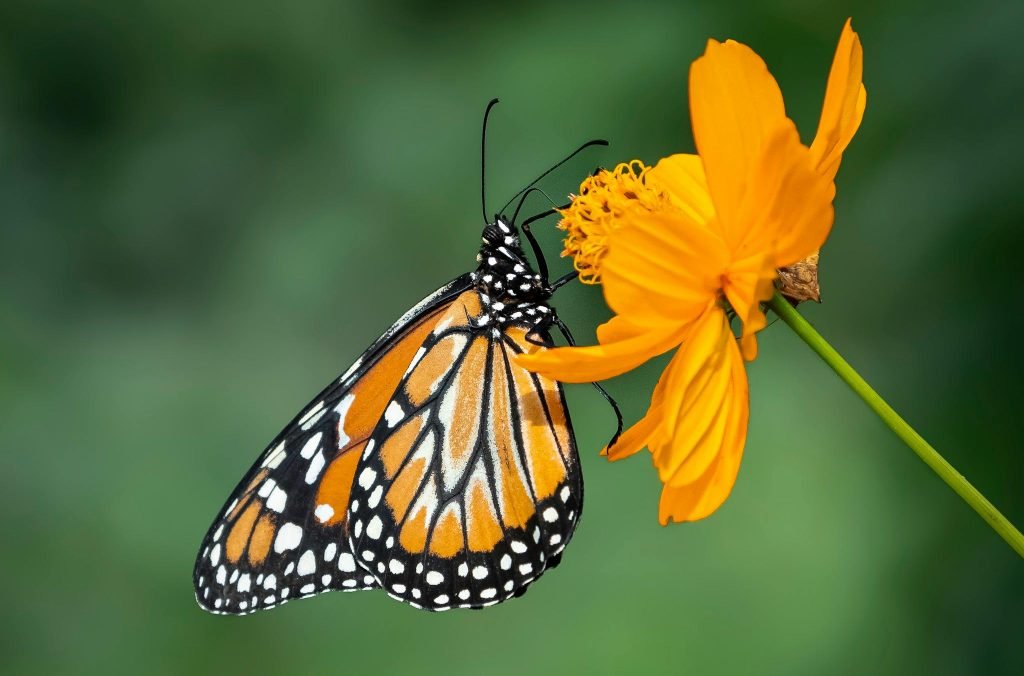
Why bees love them:
Cosmos are elegant, daisy-like flowers that sway gently in the breeze and offer a constant supply of pollen. Bees are particularly drawn to the simple, open centers of cosmos blooms, which allow for effortless feeding.
Bloom season: Early summer through fall
Best for: Honeybees and native bees
Growing tips:
- Cosmos thrive in poor to average soil—too much fertilizer will reduce blooms.
- They love full sun and need minimal watering once established.
- Sow seeds directly in the soil after frost; they germinate quickly.
- Pinch off the growing tips when plants are young to encourage bushier growth.
- Deadhead regularly for non-stop flowering.
Bonus: Cosmos self-seed easily, so you’ll often find them returning year after year—an effortless way to keep bees visiting your garden.
3. Sunflowers — The Classic Bee Buffet
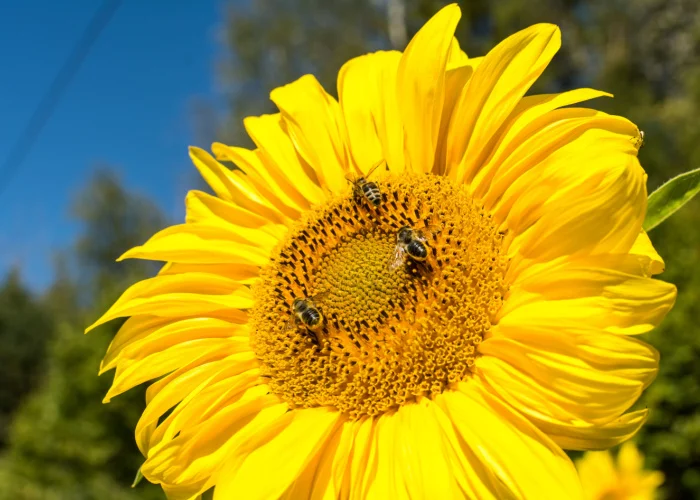
Why bees love them:
There’s a reason the sunflower is practically a symbol of summer—it’s not only beautiful but also a bee superfood. Each sunflower head is made up of hundreds of tiny florets filled with pollen and nectar. Bees love to crawl across the face of the flower, collecting food while helping it pollinate.
Bloom season: Summer to early fall
Best for: Bumblebees, honeybees, and solitary bees
Growing tips:
- Plant sunflower seeds directly in the ground after frost danger has passed.
- Choose open-pollinated varieties like ‘Lemon Queen’ or ‘Autumn Beauty’.
- Provide full sun and space plants at least 12 inches apart.
- Water regularly, especially during dry spells, but avoid waterlogging.
- For continuous blooms, sow new seeds every few weeks.
Bonus: Once the bees have had their fill, you can harvest sunflower seeds for yourself or let birds enjoy them in late summer.
4. Calendula — The Bright, Bee-Friendly Bloomer
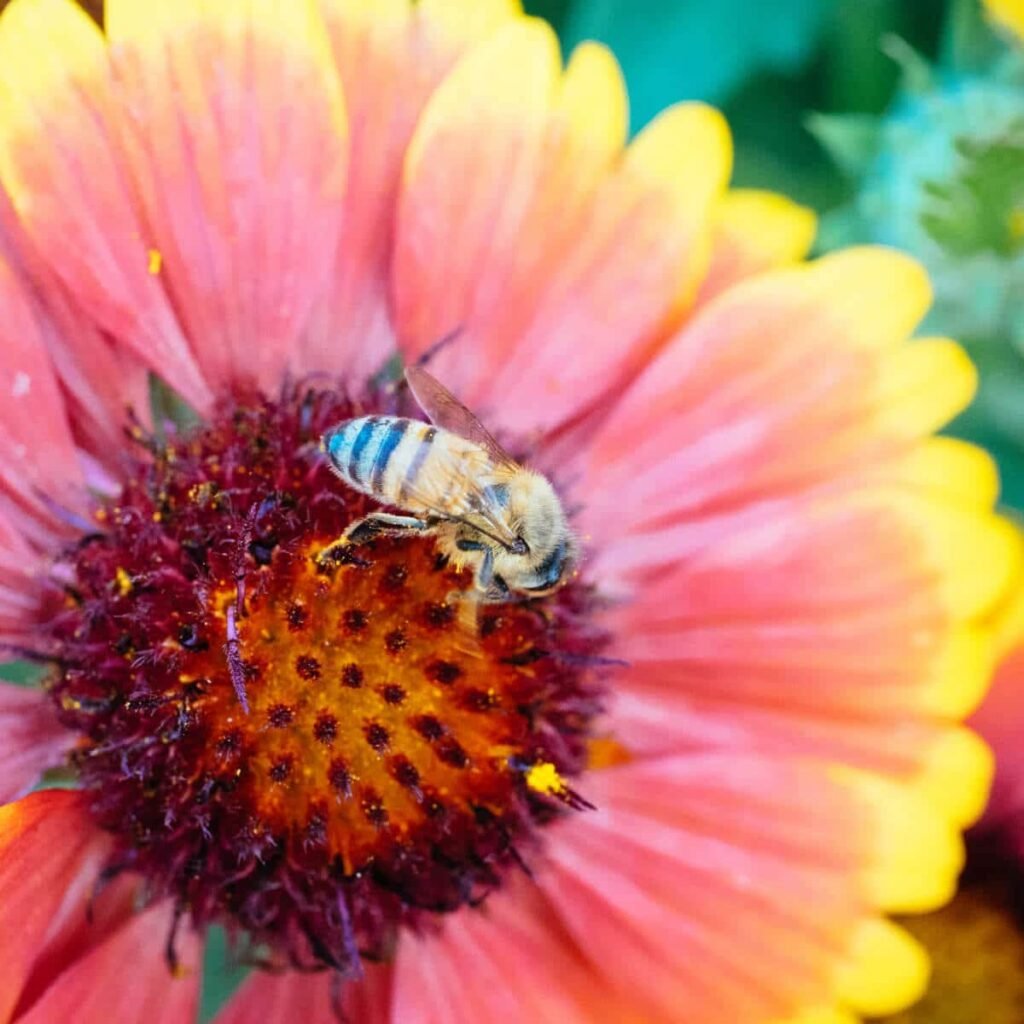
Why bees love them:
Also called pot marigold, calendula’s sunny orange and yellow flowers are a bee’s delight. The open shape makes it easy for bees to collect pollen, and the flowers keep blooming from early spring until frost, providing a long nectar season.
Bloom season: Spring through fall
Best for: Honeybees, leafcutter bees, and hoverflies
Growing tips:
- Prefers cool weather and can tolerate partial shade.
- Sow seeds directly in the garden or in containers in early spring.
- Keep the soil moist but not soggy.
- Regularly deadhead to promote new blooms.
- Avoid planting in overly rich soil—calendula blooms best when slightly stressed.
Bonus: Calendula petals are edible and have soothing properties. You can use them in teas, balms, or salads while your bees enjoy the nectar.
5. Borage — The Star of the Bee Garden
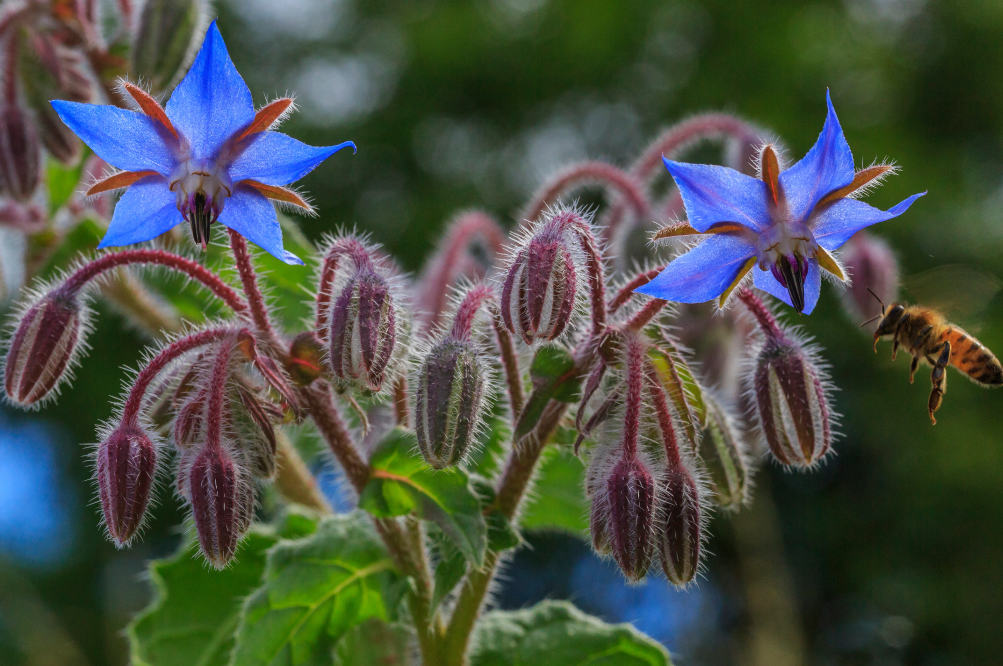
Why bees love them:
Few flowers attract bees quite like borage, also known as starflower. Its striking blue blooms are rich in nectar that replenishes quickly after being visited—meaning bees can return again and again throughout the day. Borage flowers even hang slightly downward, perfectly positioned for bees to access.
Bloom season: Late spring through fall
Best for: Honeybees and bumblebees
Growing tips:
- Plant in full sun with well-draining soil.
- Sow seeds directly into the soil after the last frost.
- Water regularly until established, then let it thrive with minimal care.
- Borage can self-seed freely—if you don’t want it spreading, harvest flowers before they drop seed.
Bonus: The leaves and flowers are edible with a light cucumber flavor, making them a refreshing garnish for summer dishes or drinks.
6. Sweet Alyssum — The Fragrant Bee Carpet
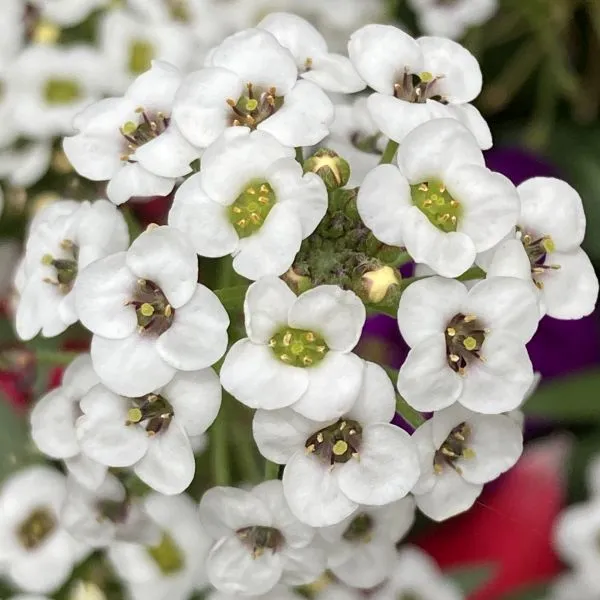
Why bees love them:
Sweet alyssum is a low-growing annual with clusters of tiny white, pink, or purple flowers that release a sugary fragrance bees adore. It provides both nectar and pollen while blooming for months on end, especially in cooler climates.
Bloom season: Early spring to late fall
Best for: Small native bees and hoverflies
Growing tips:
- Grow in full sun to partial shade.
- Excellent for edging garden beds, pathways, or containers.
- Water regularly but avoid soggy conditions.
- Trim lightly after the first bloom cycle to encourage more flowers.
- For continuous blooms, re-seed mid-season or plant successively.
Bonus: Sweet alyssum attracts other beneficial insects, such as ladybugs and lacewings, which feed on garden pests like aphids—helping you maintain a naturally balanced ecosystem.
Creating a Bee Haven: Garden Tips for Success
Planting bee-friendly flowers is just the start. To truly welcome pollinators and keep them healthy, follow these simple but powerful tips:
1. Plant in Clusters
Bees are more efficient when they can collect nectar from multiple blooms in a single area. Instead of scattering individual plants, grow your annuals in clusters of three or more of each variety.
2. Avoid Pesticides
Even natural or “bee-safe” pesticides can harm pollinators if used incorrectly. Instead, rely on natural pest deterrents like neem oil, garlic spray, or companion planting. If you must spray, do so in the evening, when bees are least active.
3. Provide a Water Source
Bees need water to regulate hive temperature and dilute honey. Offer a shallow dish filled with pebbles and water—the stones give them a safe place to land.
4. Ensure Continuous Blooming
Mix early-, mid-, and late-season annuals so your garden provides nectar throughout the growing season. Bees rely on consistent food sources, especially in late summer.
5. Choose Single Blooms Over Doubles
While double flowers look fuller, they often have so many petals that bees can’t access the nectar. Always opt for single-flowered varieties when planting for pollinators.
6. Add Some Native Annuals
Native plants are adapted to your region’s climate and attract native bee species that thrive locally. Check with your local nursery for native annuals that complement your garden.
Why Bees Matter More Than Ever
Bees are responsible for pollinating about one-third of all the food we eat, including many fruits, vegetables, and nuts. Beyond that, they maintain biodiversity by helping wildflowers reproduce. Yet, due to habitat loss, pesticide use, and climate change, global bee populations are declining at alarming rates.
By planting just a few pots or flowerbeds filled with bee-attracting annuals, you’re doing more than beautifying your space—you’re supporting pollinator survival and helping nature maintain its delicate balance.
Final Thoughts
A bee-friendly garden doesn’t have to be complicated or high-maintenance. With six annual flowers—zinnias, cosmos, sunflowers, calendula, borage, and sweet alyssum—you can turn even a small patch of soil or balcony planter into a vibrant pollinator haven.
These blooms not only reward you with color and fragrance but also invite the gentle hum of bees working happily among the petals—a sound that signals your garden is alive and thriving.
So grab a handful of seeds, find a sunny spot, and let nature take care of the rest. Because when the bees are buzzing, your entire garden blossoms in harmony.
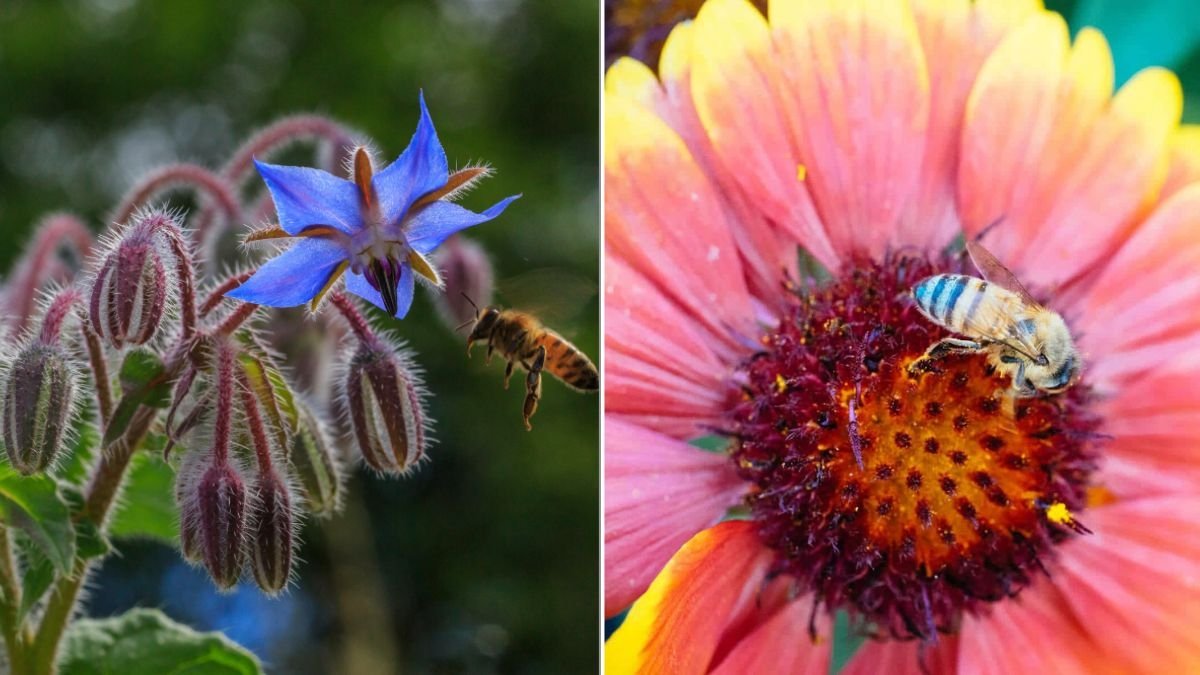
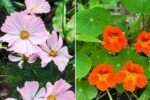
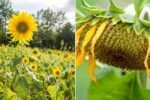
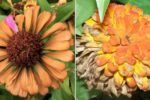
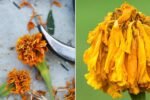
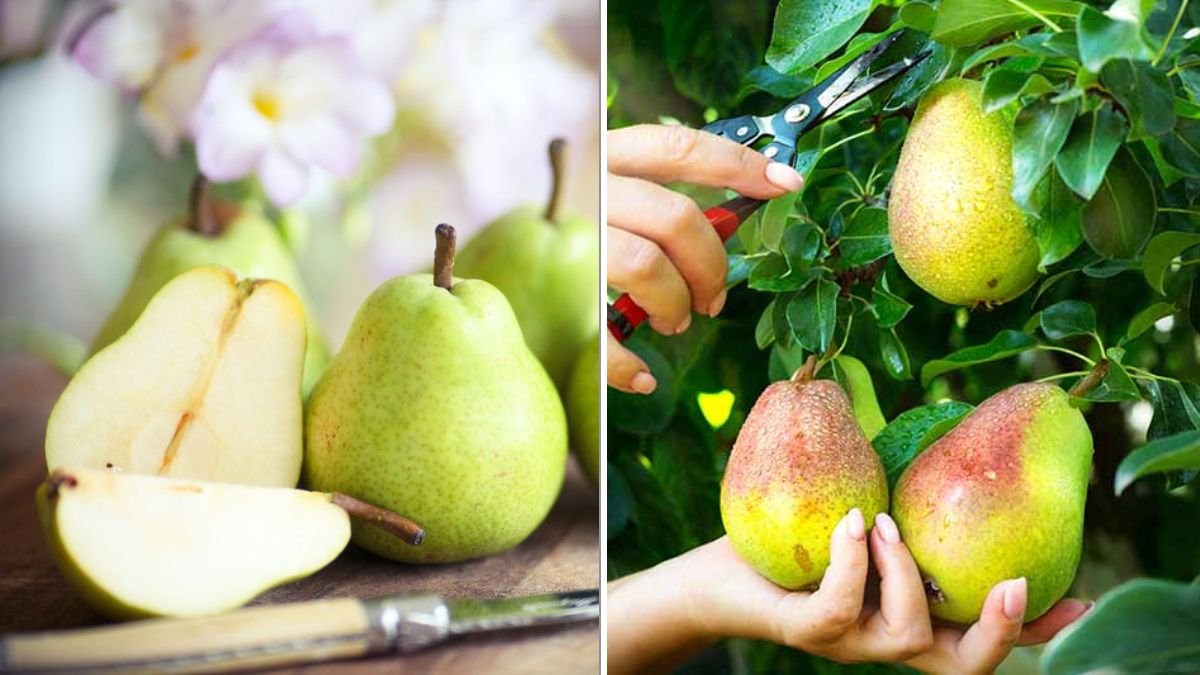
Leave A Comment